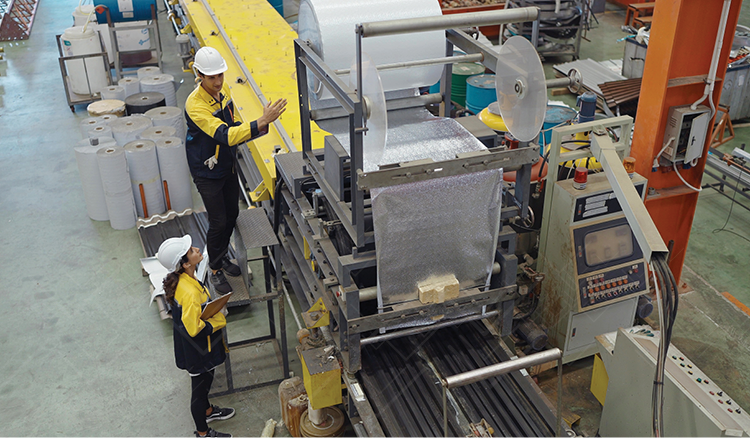What is the Bullwhip Effect? (Supply Chain)
You’ve likely been here before: you get an order that’s unusually large from your customer. And then another customer, and another customer. So you take that as a sign that demand has increased for your product, and you order enough supplies to sustain this level of demand based on your forecasts. Then a couple weeks later, your demand has settled back to its average level. What happened?
This is the bullwhip effect, and it’s more likely to have a drastic effect on you the further up the supply chain you are. At Veryable, we have helped hundreds of supply chain companies overcome fluctuating demand by flexing their labor capacity using on-demand labor they found through our marketplace. But this article isn’t about our solution; instead, we wanted to share what we’ve learned along the way.
In this article, you’ll learn what the bullwhip effect is, what causes it, and how you can be prepared to fight it.
What is the bullwhip effect?
The bullwhip effect happens when each step of the supply chain reacts to demand signals by increasing orders from suppliers. As this ripple moves further up the supply chain, each reaction to demand amplifies the signal. This causes the forecasts made by suppliers higher up the chain to drastically overestimate what is needed to meet demand.
The bullwhip effect results in excess inventory along the supply chain, and is especially dreaded by those closest to the source of raw materials.
What causes the bullwhip effect?
Many believe there are four main causes of the bullwhip effect:
- Interpretation of demand signals
- Rationing
- Order batching
- Price changes
Cause #1: Interpretation of demand signals
When demand signals are misinterpreted due to novel circumstances such as an unexpected change in consumer behavior, this is enough to set off the bullwhip effect.
Cause #2: Rationing
The clearest example of rationing as a cause of the bullwhip effect is when the COVID-19 pandemic struck, and retailers ran out of toilet paper and other items as consumers stockpiled household staples. The result was rationing by suppliers, then an increase of orders from retailers in an attempt to gain priority and get the increased amount of product they thought they would need. The actual demand did not change very much or last very long, but the initial wave was so great that the retailers were fighting to be certain they wouldn’t stock out again.
Cause #3: Order batching
With order batching, a change in ordering behavior by multiple downstream customers at once can mislead suppliers to think that their demand has increased, when it has really just happened to fall on them all at once instead of at the usual cadence.
Cause #4: Price changes
Price changes can cause the bullwhip effect when a supplier changes its price and the supplier’s customers change their order size to keep their costs steady from a cash flow perspective. They might place larger orders, but order less often. As a result, it will initially look like demand has increased, but over time, the demand will be the same.
Examples of the bullwhip effect in action
There have been many examples of the bullwhip effect recently, even as the pandemic shows signs of slowing.
One of the most highlighted has been the global semiconductor shortage. When people started spending more and more time at home during the pandemic, demand for household gadgets of all sorts began to climb. Now, there are six-month wait times for manufacturers and massive backlogs for semiconductor suppliers to work through.
Recently, Supply Chain Dive quoted motorhome manufacturer Winnebago Industries’ CEO Michael Hoppe as saying that the company has almost a year’s worth of demand in backlog.
Mitigating the bullwhip effect
Reducing reliance on safety stock will mitigate some of the bullwhip effect. This can be achieved by implementing measures to streamline so that there is less need for a buffer inventory in your processes.
Increasing the speed with which you discover changes in demand will also help you to prepare for the bullwhip effect. Since you can’t control it, you can adapt to it by being prepared and finding out about it as quickly as possible. Having a strong line of communication and regular touchpoints between your company and your suppliers and customers will help you overcome the challenges posed by the bullwhip effect.
In the end, you cannot eliminate the bullwhip effect on your own. But you can control your response to it. To respond with agility to fluctuating demand, you’ll need to gain flexibility in your capacity. That way, you can instantly scale up and down as necessary to meet demand.
Using on-demand labor, you can flex your labor capacity in real time. So, as soon as you get an increased order, you can bring in additional workers to meet the demand, without having to permanently hire people who will only create excess costs when the bullwhip effect dies down.
In fact, you can actually become proactive in fighting the bullwhip effect by building a labor pool as a flexible extension of your workforce. This will enable you to capitalize when the bullwhip effect kicks in, by flexing your capacity up to meet whatever demand comes your way. Imagine setting yourself apart from competitors as the company that always meets your customers’ needs when the supply chain is under pressure!
Learn more about how you can mitigate the bullwhip effect by reading our blog about what on-demand labor is and how it’s perfectly suited to responding to this scenario.
Previous Posts
How Policy Constraints, Not Just Production Bottlenecks, Threaten Your Bottom Line
The Future of Manufacturing and Logistics
Create a free business profile today to explore our platform.






